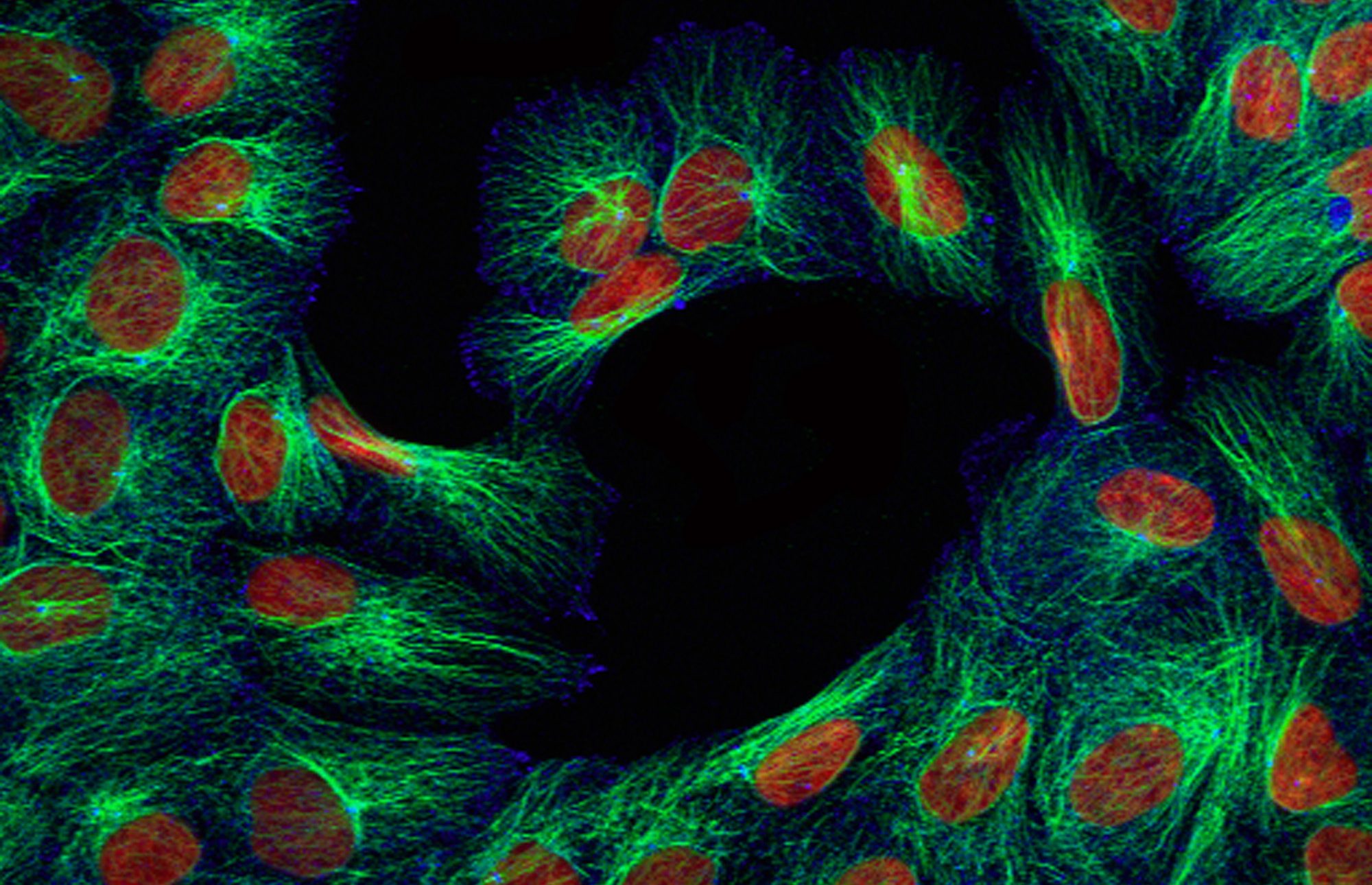By: Anna Kirillova, Cell Biology, ‘19
Author’s Note:
“This article was brought to my attention in my Human Genetics class (MCB 162) when we were discussing novel methodologies for diagnosis of fetal trisomies (Down Syndrome). The purpose of this review is to highlight how basic biology can translate into significant advancements in disease diagnosis. I hope that the reader will be intrigued by the new genetic technologies and will proceed onto reading the original research article using this review as a guide.”
When cells die, they don’t disappear without a trace. Cell-free DNA (cfDNA) is a product of apoptosis that finds its way into our lymphatic system, blood, urine, and many other fluids [1]. In healthy individuals, cfDNA primarily originates from hematopoietic lineage cells, while patients with physiological conditions or diseases have elevated levels of cfDNA, supposedly from damaged tissues and organs [2].
The process of producing cfDNA starts with uncoiling the tightly packaged DNA complex, leaving regions unprotected by nucleosomes exposed to nuclease enzymes [3]. The DNA associated with nucleosomes and transcription factors is protected from enzymatic digestion and can safely finds its way into circulating fluids of the human body [4]. Distributions of DNA interacting proteins, sites for epigenetic regulation, accessibility of transcription factors, and exon-intron splicing regions on the DNA are not random and may provide valuable information about the unique control of cell-specific genome expression. Previous research has shown that spacing patterns between nucleosomes determine the expression of genes crucial for cell-specific development [5]. Thus, knowing the exact position of the regulatory factors in the genome can provide insightful information about what cell type is being analyzed.
Researchers at the University of Washington, Seattle are now able to infer which tissue cfDNA came from by studying the associations of cfDNA with nucleosomes and patterns of fragmentation. This discovery was accomplished by analyzing the degree of DNA protection at the transcriptional start sites, which provides information about regulatory sequences that were active during transcription. Aligning the data from an unknown cfDNA to an existing genome-wide cfDNA database and identifying markers of cell-specific gene expression can determine cfDNA tissue-of-origin.
The main goal of this study was to identify cfDNA tissue-of-origin in cancer patients. Cancer patients usually show significant enrichment of non-hematopoietic cfDNA, possibly due to active cell death in the affected tissues. To identify the cancerous organ, the researchers matched the nucleosome and transcription factor signatures of unknown cfDNA from stage IV cancer patients to a library of a previously characterized cancer genome. For example, the tissue sample from a patient with ductal carcinoma in situ (cancer of the milk duct in the breast) showed a high correlation with MCF7, a metastatic breast adenocarcinoma cell line from the cancer genome library. Interestingly, the derived data from cfDNA studies consistently showed which organ was affected and matched the clinical diagnosis.
This discovery has a tremendous potential to become a minimally invasive “liquid biopsy”, which can replace high-risk testing interventions. Although nucleosome occupancy maps can point to damaged tissues in patients with metastatic cancer, limitations still exist. Patients with advanced cancer harbor copious amounts of cfDNA in their bloodstream, but it is still unknown if patients with developing stages of the disease have enough biological markers to make cfDNA testing effective in early diagnosis.
Today, diagnosis for fetal trisomy relies on genotyping the fetal DNA that is present in the mother’s blood. Thanks to sequencing technology, this is currently the most minimally invasive testing compared to directly drawing fluid from the amniotic sac [6]. The success rate of accurately sequencing the fetal DNA may be limited by the levels of fetal DNA present in the mother’s bloodstream. This complication may be resolved by studying fetal cfDNA association with nucleosomes, which is a ‘genotype-independent’ technique. By reconstructing the original genome map using nucleosome footprint data, it is possible to look for abnormalities associated with diseases without the burden of directly sequencing the genetic code. If proven effective, this next-generation tool is the future of minimally invasive diagnostics of acute and chronic tissue damage.
References
[1] Lui, Y.Y.N., Chik, K.-W., Chiu, R.W.K., Ho, C.-Y., Lam, C.W.K., and Lo, Y.M.D.(2002). Predominant hematopoietic origin of cell-free DNA in plasma and
serum after sex-mismatched bone marrow transplantation. Clin. Chem. 48,
421–427.
[2] Snyder, M. W. et al. (2016) Cell-free DNA comprises an in vivo nucleosome footprint that informs its tissues-of-origin. Cell 164, 57–68.
[3] Lo, Y.M., Zhang, J., Leung, T.N., Lau, T.K., Chang, A.M., and Hjelm, N.M.
(1999). Rapid clearance of fetal DNA from maternal plasma. Am. J. Hum.
Genet. 64, 218–224.
[4] Holdenrieder, S., Stieber, P., Chan, L.Y.S., Geiger, S., Kremer, A., Nagel, D.,
and Lo, Y.M.D. (2005). Cell-free DNA in serum and plasma: comparison of
ELISA and quantitative PCR. Clin. Chem. 51, 1544–1546.
[5] Gaffney, D.J., McVicker, G., Pai, A.A., Fondufe-Mittendorf, Y.N., Lewellen, N.,
Michelini, K., Widom, J., Gilad, Y., and Pritchard, J.K. (2012). Controls of nucleosome
positioning in the human genome. PLoS Genet. 8, e1003036.
[6] Chiu, R.W.K., Chan, K.C.A., Gao, Y., Lau, V.Y.M., Zheng, W., Leung, T.Y., Foo,C.H.F., Xie, B., Tsui, N.B.Y., Lun, F.M.F., et al. (2008). Noninvasive prenatal
diagnosis of fetal chromosomal aneuploidy by massively parallel genomic
sequencing of DNA in maternal plasma. Proc. Natl. Acad. Sci. USA 105,
20458–20463.

